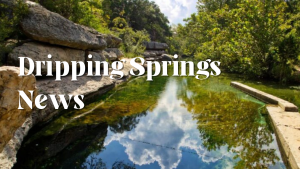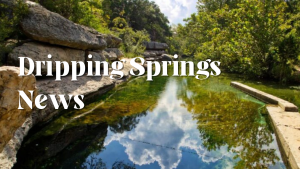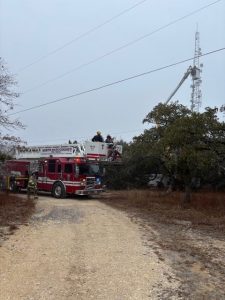Preliminary findings from Austin’s evaluation of Dripping Springs’ Texas Commission on Environmental Quality (TCEQ) draft permit shows the city “meets the criteria” for its beneficial reuse program.
The city of Austin evaluated “potential impacts on the qualify of water in Onion Creek” in its review of DS’s TCEQ permit request and beneficial reuse program, according to a press release sent out late Tuesday.
The update extends to the ongoing conversati...
Preliminary findings from Austin’s evaluation of Dripping Springs’ Texas Commission on Environmental Quality (TCEQ) draft permit shows the city “meets the criteria” for its beneficial reuse program.
The city of Austin evaluated “potential impacts on the qualify of water in Onion Creek” in its review of DS’s TCEQ permit request and beneficial reuse program, according to a press release sent out late Tuesday.
The update extends to the ongoing conversations Dripping Springs city officials have had with Austin regarding its controversial draft permit for beneficial reuse of treated effluent.
According to the release, staffs of both cities have met regularly “for the last several months” to discuss and evaluate Dripping Springs’ proposed wastewater management strategy.
The city of Austin’s Watershed Protection Department modeled Dripping Springs’ proposed beneficial reuse program, which according to preliminary findings, showed it meets the criteria by which Austin evaluates potential impacts on the quality of water in Onion Creek.
According to reports from the Austin-American Statesman, Austin’s Watershed Protection Department is on the verge of reaching a settlement agreement relating to Dripping Springs’ beneficial reuse plan.
“We are grateful to the City of Austin for working with us to further evaluate our plans for beneficial reuse and storage,” Dripping Springs Mayor Pro Tem Bill Foulds said in a statement. “Mayor Adler and the Watershed Protection Department staff, in particular, have been incredibly helpful.
Foulds added it has “never been our intent” to discharge and that the city was “on the record that beneficial reuse are our long-term goals.”
“I am excited that our two cities are working together to find solutions to accommodate the region’s rapid growth, while protecting water quality,” said Austin Mayor Steve Adler in a statement.
In 2016, Dripping Springs signed reuse contracts with the Caliterra and Howard Ranch developments to accept close to 500,000 gallons per day of reclaimed water.
According to the release, that amount, combined with plans Dripping Springs has to irrigate city-owned land, accounts for approximately 600,000 gallons per day.
According to the city, the total “puts a significant dent into the proposed allowable maximum of 995,000 gallons-per-day.”
The Dripping Springs city council has also signed a letter of intent with local landowner Scott Roberts relating to a proposed development in Driftwood.
A feasibility study will now be conducted to evaluate that development accepting up to one million gallons of treated effluent for reuse.
The Dripping Springs council also approved an ordinance at the end of 2016 that will require future developments to incorporate beneficial reuse or contribute funds to wastewater management reuse strategies.
“As we’ve said from the very beginning, wastewater disposal is not what we’re after; treated effluent reuse is where we are going, and we’re already well on our way,” Foulds said. “It’s too important to the long-term sustainability of our community.”













